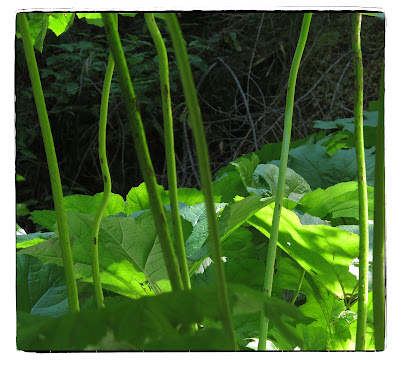Wildcat / Pacific Crest Trail above Slate Creek / North Yuba
"The connections and interactions among all the creatures in a thriving ecosystem are complex beyond the human ability to think." – Wendell Berry
"One fancies a heart like our own must be beating in every crystal and cell, and we feel like stopping to speak to the plants and animals as friendly fellow mountaineers." – John Muir
"Wild, go wild, go wild in the country
Where snakes in the grass are absolutely free"– Malcolm McLaren/Bow Wow Wow
Katydid / Deer Creek
At the end of the 18thcentury the Sacramento Valley and the northern Sierra Nevada of California were lush with native plants and animals. But even then feral horses and cattle, along with non-native plants and microbes were spreading northward into this region. These invaders were runaway descendants of Mediterranean species introduced, both deliberately and unconsciously, by Spanish colonists.
Jedidiah Smith, Michael Framboise and the Hudson’s Bay Company were trapping fur-bearing mammals in the Sacramento Valley as early as 1827. In 1833 John Work led an expedition for the Hudson’s Bay Company that consisted of 63 people and 400 horses. Because of high water they camped in what is now known as the Sutter Buttes, near today’s Yuba City. His diary entry for February 22 shows an inclination to recklessly slaughter wildlife: "There is excellent feeding for the horses, and an abundance of animals for the people to subsist on. 395 elk, 148 deer, 17 bears, and 8 antelopes have been killed in a month, which is certainly a great many more than was required." When the valley flooding receded they returned to their work of trapping otter and beaver by the millions. I'm sure that they made quite an impression on the nearby Nisenan, Koncow and Wintun peoples.
Chinook Salmon / near Long Bar / Yuba River
During the gold rush even more livestock was imported to feed the miners. By 1849 there were 5,000 head of cattle, 600 horses and 500 hogs at Nye’s Ranch on the Yuba River. At the same time John Rose, who had a Mexican Land Grant, operated another large cattle ranch near Deer Creek.
The colonizing population required that native animals like the grizzly bear, mountain lion, gray wolf, wildcat and coyote, who preyed on the introduced species, be shot on sight, poisoned and discouraged in every way. There were also full-time hunters who provided deer, elk, pronghorn antelope, quail, rabbit, squirrel and birds for the meat market. Early in the 20thcentury there was an increase in the hunting of fur-bearing animals like marten, fishers, wolverine and mink. Mountain sheep were easy targets for hunters with guns and they disappeared rapidly.
Clodius Parnassian (?) butterflies enjoying Pennyroyal / Buttermilk Bend / South Yuba
In addition to these depredations, the major problem for most native animals was the loss of habitat, which was increasingly used for the unlimited grazing of sheep and cattle. These impacts along with gold mining and timber harvesting were destroying this bountiful ecosystem. It wasn’t until the creation of the Forest Reserves and the Tahoe National forest in 1906 that there was any regulation of grazing, hunting and lumbering in the Yuba River watershed.
Today, at least, we have discussions about proposed impacts and some protections for flora and fauna. By the way, there are still plenty of wild things out there. The photos accompanying this post were made as I was out hiking in the neighborhood and represent only a tiny fraction of the biota that thrives in the Yuba River basin. For me, all wildlife sightings, regardless of how humble, are vivid and have the aura of a gift.
Rattlesnake / Middle Waters / Ridge dividing the North Yuba and the Middle Yuba
Many animals have the ability to blend into their surroundings:
Coyote in a meadow / Middle Yuba
Nighthawk hiding in granite / Fordyce Creek / South Yuba
Racoon on the run / Ramshorn Creek / North Yuba
Seldom Seen Snakes:
Mountain King Snake
Rubber Boa
Phantom Orchid / Snow Point / Middle Yuba
This beautiful plant is saprophytic, meaning that it lives off decaying material in the soil, without chlorophyll.
Canadian Geese and a Snowy Egret / Mooney Flat / Black Swan Diggings / Deer Creek
Virtual Deer / Marysville / Mouth of the Yuba River






















